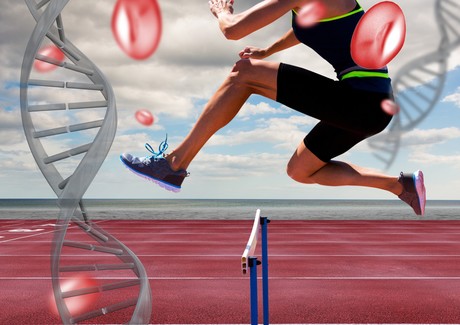'Jumping genes' leap across species, driving evolution

Scientists at the University of Adelaide have shown that widespread transfer of genes between species has radically changed the genomes of today’s mammals, and been an important driver of evolution.
In the world’s largest study of so-called ‘jumping genes’, the researchers have traced two particular genes across 759 species of plants, animals and fungi. These jumping genes are actually small pieces of DNA that can copy themselves throughout a genome and are known as transposable elements.
“Jumping genes, properly called retrotransposons, copy and paste themselves around genomes, and in genomes of other species,” said project leader Professor David Adelson, Director of the University of Adelaide’s Bioinformatics Hub. “How they do this is not yet known although insects like ticks or mosquitoes or possibly viruses may be involved — it’s still a big puzzle.
“This process is called horizontal transfer, differing from the normal parent-offspring transfer, and it’s had an enormous impact on mammalian evolution,” Professor Adelson said. For example, he claims that 25% of the genome of cows and sheep is derived from jumping genes.
“Think of a jumping gene as a parasite,” he said. “What’s in the DNA is not so important — it’s the fact that they introduce themselves into other genomes and cause disruption of genes and how they are regulated.”
Professor Adelson and his colleagues have now found that horizontal gene transfer is much more widespread than was previously thought, with frequent occurrences throughout evolution — even between plants and animals. Writing in the journal Genome Biology, the researchers revealed that the transposable elements L1 and BovB entered mammals as foreign DNA — the first time anyone has shown that the L1 element, important in humans, has jumped between species.
“L1 elements were thought to be inherited only from parent to offspring,” said Dr Atma Ivancevic, a postdoctoral researcher in the University of Adelaide’s Medical School and lead author on the study. “Most studies have only looked at a handful of species and found no evidence of transfer. We looked at as many species as we could.”
L1 elements in humans have been associated with cancer and neurological disorders. The researchers say that understanding the inheritance of this element is important for understanding the evolution of diseases.
The researchers found L1s are abundant in plants and animals, although only appearing sporadically in fungi. But the most surprising result was the lack of L1s in two key mammal species — the Australian monotremes (platypus and echidna) — showing that the gene entered the mammalian evolutionary pathway after the divergence from monotremes.
“We think the entry of L1s into the mammalian genome was a key driver of the rapid evolution of mammals over the past 100 million years,” said Professor Adelson.
The team also looked at the transfer of BovB elements between species. BovB is a much younger jumping gene: it was first discovered in cows, but has since been shown to jump between a bizarre array of animals including reptiles, elephants and marsupials. Earlier research, led by Professor Adelson, found that ticks were the most likely facilitators of cross-species BovB transfer.
The new research extended the analysis to find that BovB has jumped even more widely than previously anticipated. BovB has transferred at least twice between frogs and bats, and new potential vector species include bed bugs, leeches and locusts.
The team believes that studying insect species will help find more evidence of cross-species transfer. They also aim to study other jumping genes and explore the possibility of aquatic vectors, such as sea worms and nematodes.
“Even though our recent work involved the analysis of genomes from over 750 species, we have only begun to scratch the surface of horizontal gene transfer,” said Professor Adelson. “There are many more species to investigate and other types of jumping genes.”
Antibiotics hinder vaccine response in infants
Infants who received antibiotics in the first few weeks of life had significantly lower levels of...
Colossal announces 'de-extinction' of the dire wolf
Colossal Biosciences has announced what it describes as the rebirth of the dire wolf, which would...
Aspirin could prevent some cancers from spreading
The research could lead to the targeted use of aspirin to prevent the spread of susceptible types...




